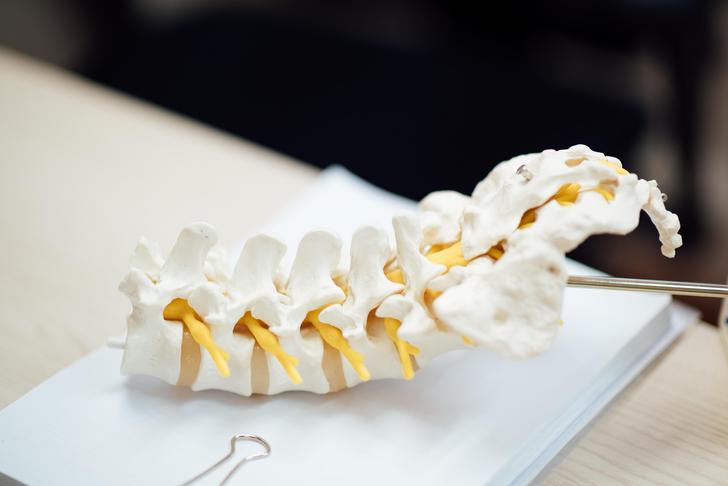10 sciatica symptoms
 Article Sources
Article SourcesSciatica is a specific type of pain caused by injury of the sciatic nerve, the nerve that runs from the lower part of the spine down through the butt and into each leg. If the nerve is compromised where it originates, it can cause pain and swelling, not only in the back but throughout the lower body.[[1]] Interestingly, sciatica isn’t a medical condition in its own right but rather a symptom of other medical conditions. Learning these 10 sciatica symptoms can help individuals know when to seek medical intervention.
Tingling or Pins and Needles
Individuals with sciatica may experience pain described as pins and needles, a sensation experienced more frequently in the legs, feet, and toes.[[2]] This pain most often manifests on one side of the body, with intensity varying from mild to severe. This tingling may crop up occasionally, often in response to sitting or standing for long periods of time, or it may be present constantly, severely affecting quality of life.

Advertisement
Dull Aches
Sciatica symptoms can also take the form of dull aches that seem to start from deeper tissue and spread outward and through the lower body without an identifiable source. These aches may be fairly benign, almost like the soreness experienced the day after a gym workout, or they can be painful enough to interfere with everyday activities, such as walking.[[3]] Like some other sciatica symptoms, dull aches can sometimes be relieved through massage or pressure.

Advertisement
Radiating Pain
Radiating pain is perhaps the most commonly known and discussed symptom of sciatica. When the sciatic nerve is compressed, it can cause shooting pains that zing away from the source and carry down the buttocks, hips, and legs, which may sometimes extend into the feet and toes. [[2]] Shooting pains from sciatica can be particularly disruptive to the people experiencing them because of the sheer unpredictability.

Advertisement
Weakness in the Affected Leg(s)
Because sciatica’s root cause is the compression of a nerve traveling to the lower extremities, it can eventually interrupt nerve signals to the extent that the leg (or legs) can no longer react as usual.[[4]] That loss of feeling or perceived weakness can manifest as difficulty walking, or the individual may struggle to push up from sitting to a standing position. Leg weakness associated with sciatica is considered quite concerning, and individuals with this sciatica symptom should seek medical attention.

Advertisement
Pain Increased With Certain Movements
The pain symptoms experienced above may show up occasionally or be experienced on a regular basis. However, sciatica pain often occurs as a result of certain movements.[[1]] For example, sciatica may be the underlying cause of back or leg pain that worsens when straining, sneezing, coughing, squatting, bending backward, walking more than a few feet, or standing or sitting for prolonged periods of time. Stretching exercises can help make sciatica pain more tolerable.

Advertisement
Cauda Equina Syndrome
In rare cases, sciatica may lead to severe nerve impingement or damage. It can also lead to the development of cauda equina syndrome (CES).[[5]] Cauda equina is a serious condition signified by a range of symptoms, including loss of control over the bladder and/or bowels. Patients who develop this condition require spinal decompression as soon as possible to relieve the nerve pressure and prevent permanent damage.

Advertisement
Foot Drop
Foot drop isn’t commonly associated with sciatica, but it may be a sign of CES or other neurological conditions.[[6]] A person with foot drop may experience extreme weakness in one foot and be unable to lift their foot or toes upward. This results in foot-dragging while the person walks. Some people adopt a high-stepping gait, almost like a march, as a result. Foot drop requires further medical evaluation.

Advertisement
Causes of Sciatica
Sciatica is caused by damage to or pressure on the sciatic nerve.[[1]] There are several reasons why the nerve may become compromised. Possible root causes of sciatica include a slipped or herniated disc, spinal stenosis, or a pelvic break/fracture. A spinal tumor can also compress the sciatic nerve, as can piriformis syndrome, a painful disorder that involves a muscle nestled deep in the buttocks. When the piriformis is irritated, it can spasm, putting pressure on the sciatic nerve.

Advertisement
Sciatica Treatment Options
Self-care treatment options for sciatica involve reduced activities for a few days, ice packs and/or warm compresses in 20-minute intervals, or using over-the-counter anti-inflammatories and pain medications, such as acetaminophen or ibuprofen. Some people find relief by performing gentle stretches or using light weights for general strength training.[[2]] Alternative therapies, such as acupuncture, may also be helpful. More severe cases of sciatica may require prescription medication, physical therapy, spinal injections, or even surgery.

Advertisement
When to See a Doctor
People who suspect sciatica or have been diagnosed with sciatica previously should seek medical attention if the pain is concerning or the weakness or numbness seems progressive. Other critical symptoms of sciatica include loss of bladder or bowel control or a sudden surge in pain following an attack, injury, or accident.[[1]] Seek immediate medical attention for sciatica that arises immediately following trauma or occurs in tandem with a fever or redness and swelling.

Advertisement





